The other day, I got Ichiran cup noodles from a nearby 7-Eleven. They had a lot in stock then, but today they were all sold out. Despite its high price of about 500 yen without toppings, it's all sold out. The popularity of Ichiran is formidable.
Luckily, Ichiran bag noodles were still available, so I bought them this time.
Click the link below to view the Japanese version of the article
一蘭袋麺+自作チャーシューは劇的にうまい - 私立文系大学卒会社員が米国株で徐々に収入を得ながらプライベートキャンプ場を作る
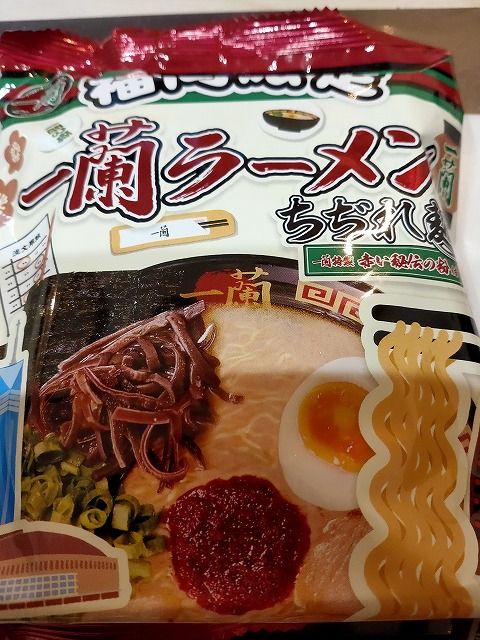
Unlike cup noodles, bag noodles have been available at some Ichiran stores for several years. However, the design is different from this time, so it's unclear whether the taste is the same.
The large characters say "Fukuoka Limited". It's lined up at 7-Eleven outside of Fukuoka Prefecture, so I feel that the "Fukuoka Limited" setting has already collapsed, but I don't intend to say anything unnecessary because it would be a problem if it really is limited to Fukuoka.
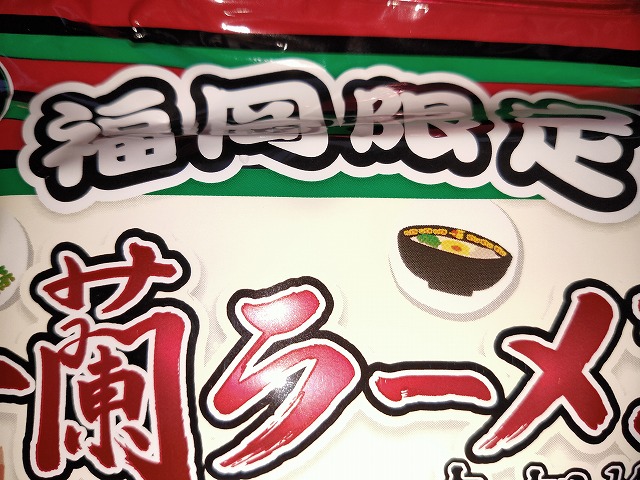
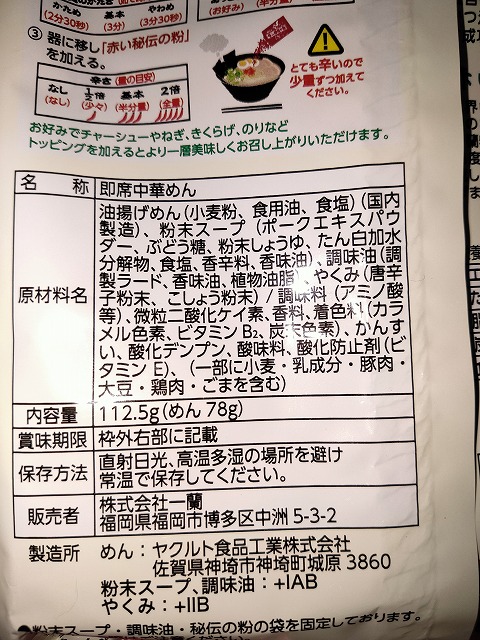
Not the non-fried noodles common to high-end instant noodles, but fried noodles. This is surprising.
The manufacturer is Yakult Food Industry. It's not a company that has much of a ramen image, but it's famous for somen in Kanzaki City, so it may be good at making high-quality noodles.
The manufacturer is Yakult Food Industry. It's not a company that has much of a ramen image, but it's famous for somen in Kanzaki City, so it may be good at making high-quality noodles.
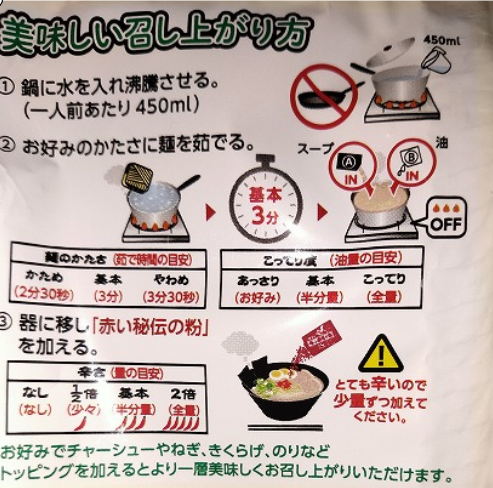
After boiling, add the soup in a pot. It was a bit surprising because many high-priced ramen are the type where you add the soup in a bowl.

Unlike cup noodles, A is powdered soup. B is oil, and C is the secret powder. When it was cup noodles, a liquid secret sauce was attached.
As soon as I finished checking the contents, I wanted to boil and eat it right away, but it's not artistic to eat bag noodles as they are, so I decided to put char siu on it. Therefore, I made char siu first.
My way of making char siu is easy. Just fry a chunk of pork belly well and simmer it in soy sauce for 1-2 hours.
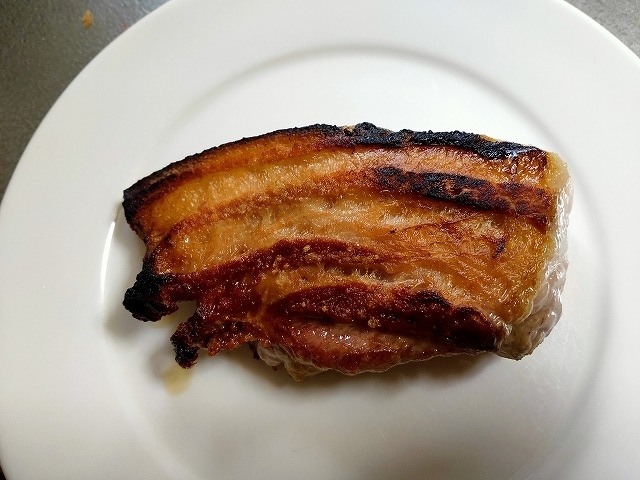
Fry the chunk of pork belly well in a frying pan. Burn it to this extent.
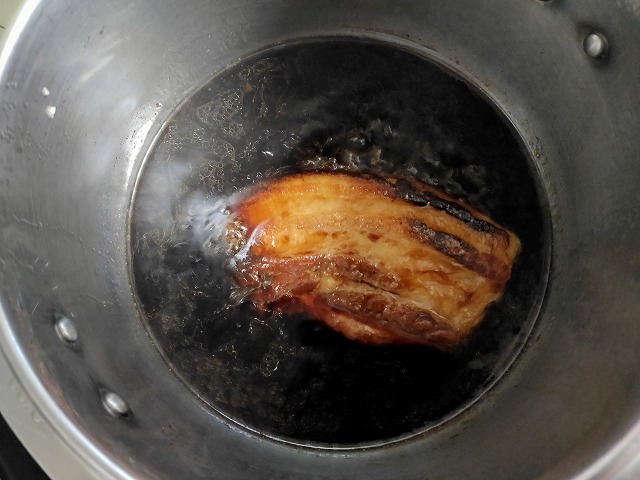
Put the pork belly that has been well fried on both sides in a pot, cover it with a drop lid, and heat it on low heat for about 1-2 hours.
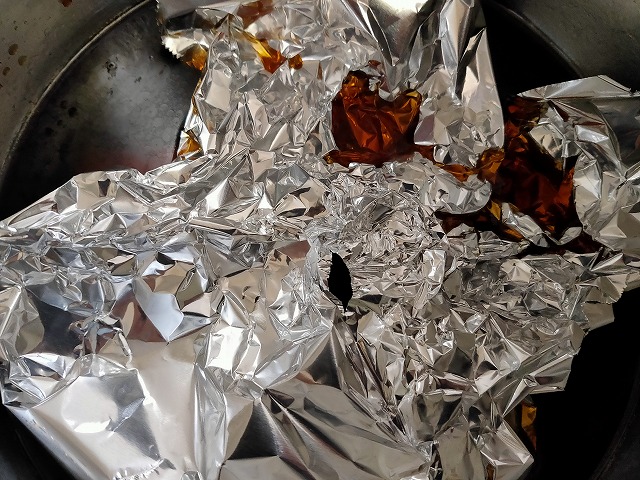
The finished char siu is hard to cut as it is. Therefore, cool it in the refrigerator and make it easy to cut. When the char siu is cooled, cut it to your favorite thickness.
Add a little of the char siu sauce made when boiling the char siu to the soup to transfer the flavor of the char siu to the soup as well.
Add bean sprouts, char siu, and green onions. Use plenty of secret powder.
Now for the actual meal.

Although it was powdered soup, I was surprised at the high degree of reproduction of the soup. The reproduction degree is higher than that of cup noodles with liquid soup attached, and the aroma also retains a lot of Ichiran's atmosphere.
Although it's fried noodles, the noodles themselves are not greasy, and they have a moderate thinness and firmness.
The compatibility with homemade char siu is better than expected. The secret powder is surprisingly spicy. I feel not only the spiciness of chili peppers but also the spiciness of sansho.
I don't know if they actually use sansho.
This is a great success. It takes more effort than cup noodles, but if you want to eat more delicious Ichiran ramen at home, I recommend Ichiran bag noodles.
From the left, it's the restaurant's ramen, cup noodles, and bag noodles. Please note that the bag noodles do not come with toppings.



Now, let's pick up some important Japanese words from the text and provide detailed explanations in English:
-
Ichiran (一蘭): Ichiran is a popular Japanese ramen restaurant chain known for its tonkotsu ramen (ramen with a broth made from pork bones).
- Char siu (チャーシュー): Char siu is a type of barbecued pork in Cantonese cuisine. In the context of ramen, it refers to slices of roasted or braised pork belly that are commonly used as a topping.
- Bag noodles (袋麺): Bag noodles refer to instant noodles that come in a bag or packet, as opposed to cup noodles which come in a pre-packaged cup or bowl.
- Fukuoka (福岡): Fukuoka is a city in Japan, located on the island of Kyushu. It's known for its food culture, including ramen.
- Sansho (山椒): Sansho is the Japanese term for Japanese pepper. It has a unique aroma and flavor, and is often used as a spice in Japanese cuisine.
- Yakult Food Industry (ヤクルト食品工業): Yakult Food Industry is a company in Japan, known for producing Yakult, a probiotic dairy product. In this context, they are the manufacturer of the Ichiran bag noodles.
- Somen (そうめん): Somen are thin white Japanese noodles made of wheat flour. They are served cold and are popular during the summer.
- Bean sprouts (もやし): Bean sprouts are the sprouts of beans, often used as a topping in ramen and other Asian dishes.
- Green onions (ネギ): Green onions, also known as scallions, are a type of onion that is often used as a garnish in Japanese cuisine.
- Tonkotsu (豚骨): Tonkotsu is a type of ramen broth made from pork bones. It's known for its rich, creamy texture and deep flavor.
Here are some important English words from the text with detailed explanations in Japanese:
-
Ichiran (一蘭): 一蘭は、豚骨ラーメンで知られる人気の日本のラーメンチェーン店です。
-
Char siu (チャーシュー): チャーシューは広東料理のバーベキューポークの一種です。ラーメンの文脈では、一般的にトッピングとして使用されるローストまたは煮込んだ豚バラ肉のスライスを指します。
-
Bag noodles (袋麺): 袋麺は、カップ麺(事前にパッケージ化されたカップまたはボウルに入っている)とは対照的に、袋またはパケットに入ったインスタント麺を指します。
-
Fukuoka (福岡): 福岡は日本の都市で、九州島に位置しています。ラーメンを含む食文化で知られています。
-
Sansho (山椒): 山椒は日本語で日本のコショウを指します。独特の香りと風味があり、日本料理のスパイスとしてよく使用されます。
-
Yakult Food Industry (ヤクルト食品工業): ヤクルト食品工業は、プロバイオティクス乳製品であるヤクルトを製造している日本の会社です。この文脈では、彼らは一蘭の袋麺の製造者です。
-
Somen (そうめん): そうめんは、小麦粉から作られた細い白い日本の麺です。冷たく提供され、夏に人気があります。
-
Bean sprouts (もやし): もやしは、ラーメンや他のアジア料理のトッピングとしてよく使用される豆の芽です。
-
Green onions (ネギ): ネギ、またはスプリングオニオンは、日本料理のガーニッシュとしてよく使用されるタマネギの一種です。
-
Tonkotsu (豚骨): 豚骨は、豚の骨から作られるラーメンのスープの一種です。そのリッチでクリーミーな質感と深い風味で知られています。
-
Noodles (ヌードル): ヌードルは、小麦粉、米粉、または他の穀物から作られた細長い食品です。ラーメン、パスタ、うどんなど、さまざまな料理で使用されます。
-
Soup (スープ): スープは、肉、野菜、魚、または骨から抽出した液体食品です。ラーメンのスープは、特定の風味と深さを提供します。
-
Toppings (トッピング): トッピングは、料理の上に追加される食材のことを指します。ラーメンのトッピングには、チャーシュー、ネギ、もやしなどがあります。
-
Flavor (風味): 風味は、食品や飲料が味覚と嗅覚に与える感覚を指します。風味は、食品の味、香り、および口当たりを決定します。
-
Spicy (辛い): 辛いは、食品がピリッとしたまたは刺激的な味を持つことを指します。これは通常、唐辛子、山椒、または他のスパイスによって引き起こされます。
-
Manufacturer (製造元): 製造元は、製品を作る会社または組織を指します。この文脈では、ヤクルト食品工業は一蘭の袋麺の製造元です。
-
Restaurant (レストラン): レストランは、食事を提供する商業施設です。一蘭は、ラーメンを提供するレストランです。
-
Reproduction (再現): 再現は、特定の味、風味、または体験を正確にまたは可能な限り近く模倣することを指します。この文脈では、一蘭の袋麺はレストランのラーメンの風味を再現しています。
-
Price (価格): 価格は、製品またはサービスを購入するのに必要な金額を指します。この文脈では、一蘭の袋麺は500円という価格で販売されています。
-
Popularity (人気): 人気は、製品、サービス、または人物が広く受け入れられ、好まれている度合いを指します。この文脈では、一蘭のラーメンは非常に人気があります。
-
Pork belly (豚バラ肉): 豚バラ肉は、豚の腹部から取られる肉で、脂肪と筋肉の層が特徴です。チャーシューの作り方では、豚バラ肉はよく焼かれ、醤油で煮込まれます。
-
Frying pan (フライパン): フライパンは、食品を焼く、炒める、または揚げるための平底の鍋です。この文脈では、豚バラ肉を焼くために使用されます。
-
Pot (鍋): 鍋は、食品を煮る、蒸す、または茹でるための深い料理器具です。この文脈では、チャーシューを煮るために使用されます。
-
Refrigerator (冷蔵庫): 冷蔵庫は、食品を冷やすための電化製品です。この文脈では、チャーシューを冷やすために使用されます。
-
Cut (カット): カットは、物体を二つ以上の部分に分割する行為を指します。この文脈では、チャーシューをスライスにカットします。
-
Flavor transfer (風味の移行): 風味の移行は、一つの食品から別の食品への風味の移動を指します。この文脈では、チャーシューの風味がスープに移行します。
-
Powder soup (粉末スープ): 粉末スープは、水を加えるとスープになる乾燥粉末を指します。この文脈では、一蘭の袋麺には粉末スープが含まれています。
-
Oil (油): 油は、食品の調理や風味付けに使用される脂肪の液体形態を指します。この文脈では、一蘭の袋麺には油が含まれています。
-
Secret powder (秘伝の粉): 秘伝の粉は、特定のレシピや製品の風味を作り出すための特別なスパイスミックスを指します。この文脈では、一蘭の袋麺には秘伝の粉が含まれています。
-
Taste (味): 味は、食品や飲料が舌に与える感覚を指します。この文脈では、一蘭の袋麺の味が評価されています。
-
Texture (食感): 食感は、食品が口の中でどのように感じるかを指します。この文脈では、一蘭の袋麺の麺の食感が評価されています。
-
Compatibility (相性): 相性は、二つ以上の食品や飲料が一緒に食べたときにどのように味が合うかを指します。この文脈では、自作チャーシューと一蘭の袋麺の相性が評価されています.
-
Chili pepper (唐辛子): 唐辛子は、料理に辛さを加えるために使用される辛い果実です。この文脈では、一蘭の秘伝の粉には唐辛子が含まれている可能性があります。
-
Recommendation (おすすめ): おすすめは、特定の製品やサービスを他の人に勧めることを指します。この文脈では、一蘭の袋麺がおすすめされています。
-
Toppings (具材): 具材は、料理の上に追加される食材のことを指します。この文脈では、一蘭の袋麺には具材が含まれていません。
-
Surprise (驚き): 驚きは、予想外の出来事や情報に対する反応を指します。この文脈では、一蘭の袋麺のスープの再現度に対する驚きを表しています。
-
Aroma (香り): 香りは、物質が放出する気体の感じられる特性を指します。この文脈では、一蘭の袋麺のスープの香りを指しています。
-
Fried noodles (油揚げ麺): 油揚げ麺は、油で揚げられた麺を指します。この文脈では、一蘭の袋麺が油揚げ麺であることを指しています。
-
Spiciness (辛さ): 辛さは、食品や飲料が舌に与える刺激を指します。この文脈では、一蘭の秘伝の粉の辛さを指しています。
-
Sansho (山椒): 山椒は、日本の植物で、その実はスパイスとして使用されます。この文脈では、一蘭の秘伝の粉に山椒が含まれている可能性が示唆されています。
-
Success (成功): 成功は、目標や期待を達成することを指します。この文脈では、一蘭の袋麺と自作チャーシューの組み合わせが成功したことを指しています。
-
Effort (手間): 手間は、特定の結果を達成するために必要な労力や時間を指します。この文脈では、一蘭の袋麺を調理するための手間を指しています。
-
Left (左): 左は、方向や位置を指すための基本的な用語です。この文脈では、写真の左側にあるものを指しています.
-
Store (店舗): 店舗は、商品やサービスを販売するための物理的な場所を指します。この文脈では、一蘭のラーメン店を指しています.
-
Cup noodles (カップ麺): カップ麺は、カップに入ったインスタントの麺料理を指します。この文脈では、一蘭のカップ麺を指しています.
-
Bag noodles (袋麺): 袋麺は、袋に入ったインスタントの麺料理を指します。この文脈では、一蘭の袋麺を指しています.
-
Note (注意): 注意は、特定の情報に対する意識を高めるための警告やアドバイスを指します。この文脈では、一蘭の袋麺に具材が含まれていないことに対する注意を指しています.
-
Present Simple Tense (現在形): 現在形は、一般的な事実、習慣、状態、感情などを表すために使用されます。例えば、"The soup is surprisingly good."(スープは驚くほど良い)では、"is"は現在形の動詞です。
-
Present Perfect Tense (現在完了形): 現在完了形は、過去の出来事が現在に影響を与えている場合や、過去の出来事が現在の状況と関連している場合に使用されます。例えば、"I have made the chashu."(私はチャーシューを作った)では、"have made"は現在完了形の動詞です。
-
Comparative Adjectives (比較級): 比較級は、二つのものを比較するために使用されます。例えば、"The bag noodles are more expensive than the cup noodles."(袋麺はカップ麺よりも高価です)では、"more expensive"は比較級の形容詞です。
-
Superlative Adjectives (最上級): 最上級は、三つ以上のものの中で最も特徴が顕著なものを指すために使用されます。例えば、"This is the best ramen I've ever had."(これは今まで食べたラーメンの中で最高です)では、"best"は最上級の形容詞です。
-
Modal Verbs (助動詞): 助動詞は、可能性、許可、義務などを表すために使用されます。例えば、"You can add the chashu to the ramen."(ラーメンにチャーシューを加えることができます)では、"can"は助動詞です。
-
Passive Voice (受動態): 受動態は、行為の受け手を強調するために使用されます。例えば、"The chashu is made by frying pork belly."(チャーシューは豚バラ肉を焼いて作られます)では、"is made"は受動態の動詞です。
-
Conditional Sentences (条件文): 条件文は、特定の条件とその結果を表すために使用されます。例えば、"If you want a more authentic taste, you should try the bag noodles."(もっと本格的な味が欲しいなら、袋麺を試すべきです)では、"If"と"should"は条件文を形成するための単語です。
-
Adverbs of Frequency (頻度副詞): 頻度副詞は、行動がどの程度の頻度で行われるかを示します。例えば、"I always make chashu at home."(私は常に家でチャーシューを作ります)では、"always"は頻度副詞です。
-
Past Simple Tense (過去形): 過去形は、過去の特定の時間に起こった出来事を表すために使用されます。例えば、"I bought the bag noodles yesterday."(私は昨日袋麺を買いました)では、"bought"は過去形の動詞です。
-
Future Simple Tense (未来形): 未来形は、未来の出来事を表すために使用されます。例えば、"I will try the cup noodles next time."(次回はカップ麺を試すつもりです)では、"will try"は未来形の動詞です。
-
Gerunds (動名詞): 動名詞は、動詞が名詞として機能する場合に使用されます。例えば、"I enjoy eating ramen."(私はラーメンを食べるのを楽しんでいます)では、"eating"は動名詞です。
-
Infinitives (不定詞): 不定詞は、動詞の基本形で、多くの場合、"to"と一緒に使用されます。例えば、"I want to eat ramen."(私はラーメンを食べたい)では、"to eat"は不定詞です。
-
Relative Clauses (関係節): 関係節は、名詞や代名詞に関する追加情報を提供します。例えば、"The ramen that I ate was delicious."(私が食べたラーメンは美味しかった)では、"that I ate"は関係節です。
-
Prepositions (前置詞): 前置詞は、名詞、代名詞、または名詞句と他の単語との関係を示します。例えば、"I bought the ramen at the store."(私は店でラーメンを買いました)では、"at"は前置詞です。
-
Conjunctions (接続詞): 接続詞は、単語、句、節を接続します。例えば、"I like ramen and gyoza."(私はラーメンと餃子が好きです)では、"and"は接続詞です。
-
"I was surprised to find that all of them had sold out.": この文では、"to find"の形で不定詞が使われています。不定詞は、動詞の基本形で、ここでは"surprised"という形容詞に続いて感情の原因を説明するために使われています。
-
"The bag noodles, on the other hand, were still available.": この文では、"on the other hand"という表現が使われています。これは、前述の情報と対照的な新しい情報を導入するための接続詞的なフレーズです。
-
"The noodles are fried, which was unexpected.": この文では、"which"を使った関係代名詞の節があります。"which"は、先行する節または文全体に関する追加情報を提供します。
-
"I decided to top it with chashu.": この文では、"decided to"という表現が使われています。これは、未来の行動を決定するときに使われる表現で、"decide"の後には不定詞が続きます。
-
"The chashu is made by frying pork belly.": この文では、受動態が使われています。受動態は、行為の受け手を強調するために使用されます。"is made"は受動態の動詞です。
-
"The soup was surprisingly good.": この文では、副詞"surprisingly"が形容詞"good"を修飾しています。副詞は、動詞、形容詞、または他の副詞を修飾するために使用されます。
